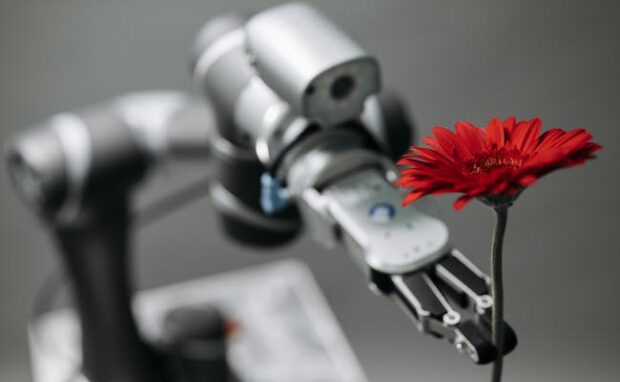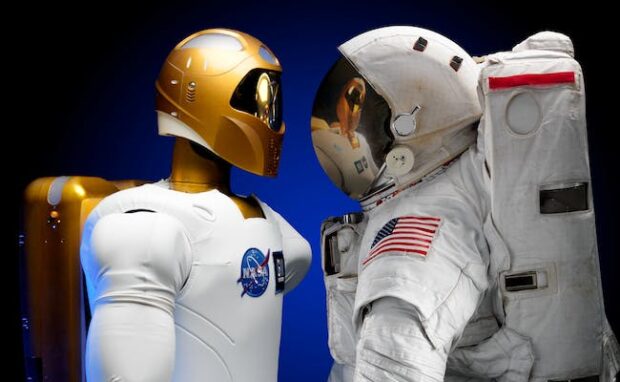Robots could make people lazier – study
A study from the Technical University of Berlin suggests that working alongside robots might make humans lazier in tasks. This technology could cause unintentional carelessness, more frequent errors, and decreased work quality. As a result, workplace robots could increase the likelihood of safety issues.
More companies are adopting robots and artificial intelligence into their offices, so more should know about their potential benefits and risks. Recent findings suggest robots are like any ordinary team member. Work with them, and you can produce more than ever. However, let them do everything; you’re more likely to have problems.
This article will discuss how scientists realized robots could make people less motivated at work. Later, I will cover other innovations that have expanded robot applications.
How did scientists conduct their robot study?

This study is a collaboration among Dietlind Helene Cymek, Anna Truckenbrodt, and Linda Onnasch from the Technical University of Berlin. They wanted to see whether working with robots has the same effects as working with humans.
Specifically, they wanted to confirm whether human-robot teamwork produces social loafing. The latter refers to the scenario when people exert less effort if they believe their team members will perform a similar task.
The Daily Beast said they tested this hypothesis by having 42 volunteers identify errors on circuit board images. However, the scientists told half of the participants their boards had already undergone screening via a robot called Panda.
Both groups spent roughly the same amount of time on the task and rated their effort and performance similarly. Yet, the Panda group made more errors and identified fewer defects.
The robot-checked group found an average of 3.3 defects, but the control group found an average of 4.2. As a result, the researchers concluded the former group exerted less effort in checking their work.
The human participants may have exhibited social loafing for robots. After all, why check the work when the Panda bot already did? The Daily Beast said this reduced effort is acceptable in a laboratory setting.
You may also like: ChatGPT baby names upset expectant mom
“In longer shifts, when tasks are routine, and the working environment offers little performance monitoring and feedback, the loss of motivation tends to be much greater,” said lead author Llinda Omnasch.
“In manufacturing in general, but especially in safety-related areas where double checking is common, this can have a negative impact on work outcomes,” she added.
Of course, the laboratory setting limits the findings’ viability in the real world. Moreover, it used a small sample size of 42 people. Nevertheless, we must be wary of the potential risks of emerging technologies.
What can modern robots do?

Robots may have downsides, but they have unprecedented benefits, too. For example, the Japanese city of Kumamoto launched robots to help anxious students return to school.
The Kumamoto City Board of Education reported that 2,760 elementary and middle school students did not attend school in 2022. That is twice the 2018 record, so it proposed to “place robots in classrooms that can be controlled remotely by students who haven’t been attending classes.”
One of its spokespersons said, “There are some students who have trouble communicating but have not rejected it entirely.” The representative added, “These robots provide a way to lower the hurdle to participating in quasi-experiences [with their classmates], and we hope that will then encourage them to take the next step [towards returning to attending class in person].”
You may also like: OpenAI CEO denies ChatGPT “got dumber”
On the other side of the globe, NASA created a humanoid robot that will check whether outer space environments are safe for astronauts to enter. However, its first mission is at an oil rig in the Land Down Under.
The Valkyrie bot will check Woodside Energy facilities in Australia to enhance worker safety. In turn, the company will provide NASA with valuable research data.
“NASA plans to leverage experience operating Valkyrie in Woodside’s facilities to learn how to better design robots for work in dirty and hazardous conditions, like those found on the Moon at the long-term worksites and habitats that will be established as part of future Artemis missions,” said the space org.
Conclusion
A recent study from the Technical University of Berlin found that people tend to be lazier when they work with robots. People may think robots are already doing similar tasks, so there’s no need to verify their results.
Nevertheless, laziness is a personal characteristic that manifests whether we work with humans or robots. It’s up to us how we use these technologies and how they impact our lives.
Learn more about this unique robot study on its Frontiers webpage. Moreover, check out more digital tips and trends at Inquirer Tech.